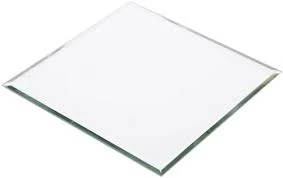

The Allure of Colored Float Glass
Colored float glass is a remarkable material that has captured the attention of artists, architects, and designers alike. Known for its vibrancy and versatility, this type of glass provides both aesthetic and functional benefits in a variety of applications. From stunning stained glass windows in cathedrals to modern glass facades on skyscrapers, colored float glass has become a staple in both traditional and contemporary design.
At its core, float glass is made by floating molten glass on top of molten tin, creating a smooth, flat surface. The process was first developed in the 1950s and has since become the standard method for producing high-quality glass. To create colored float glass, various metal oxides and additives are introduced during the glass-making process. These additives can produce a wide spectrum of colors, allowing for endless creative possibilities.
One of the most appealing aspects of colored float glass is its ability to manipulate light. Depending on the thickness and color of the glass, it can either filter sunlight, allowing for a softer indoor ambiance, or reflect it, creating a lively outdoor display. This quality has made it particularly popular in architectural applications, where natural lighting plays a crucial role in enhancing the interior atmosphere of buildings. By using colored float glass, architects can bring a dynamic element to their designs, transforming ordinary spaces into extraordinary experiences.
In addition to its aesthetic appeal, colored float glass is also valued for its durability and ease of maintenance. Unlike traditional materials that may fade over time or require extensive upkeep, colored float glass retains its color and clarity with minimal effort. Consequently, it is an ideal choice for both indoor and outdoor installations. From colorful skylights to decorative room dividers, the longevity of colored float glass ensures that its beauty remains unharmed by the elements or time.

The versatility of colored float glass is evident in its wide array of applications. In residential settings, it can be used in everything from kitchen backsplashes to shower enclosures, providing a pop of color and a touch of elegance. In commercial spaces, colored float glass can be incorporated into partition walls, storefronts, or even art installations, allowing businesses to reflect their brand identity in imaginative and memorable ways.
Moreover, the use of colored float glass in public art installations has gained traction in recent years. Artists have begun to explore this medium to create vibrant murals and sculptures that engage the community and encourage interaction. By leveraging the interplay of light and transparency, these artworks not only beautify public spaces but also provoke thought and inspire conversation among viewers.
Sustainability has become an increasingly important factor in the choice of materials for construction and design. Fortunately, colored float glass is recyclable, making it an eco-friendly option for builders and designers. When repurposed at the end of its life cycle, colored float glass can be transformed into new products without losing its quality. This commitment to sustainability aligns with the growing trend towards eco-conscious design practices, making colored float glass an attractive choice for modern developments.
As technology advances, the future of colored float glass looks promising. Innovative manufacturing processes are already being developed to enhance the variety of colors and patterns available. Additionally, smart glass technologies that can change color or opacity with the touch of a button are beginning to emerge. These developments hint at a future where colored float glass not only beautifies our environments but also adapts to our needs in real-time.
In conclusion, colored float glass represents an intersection of artistry, functionality, and sustainability. Its ability to enhance light, create stunning visuals, and withstand the test of time makes it an invaluable resource for designers across numerous fields. Whether used in captivating architectural designs or exquisite works of art, colored float glass continues to inspire innovation and creativity, proving that the beauty of this medium is as timeless as it is modern. The versatility and charm of colored float glass ensure its place as a cherished material for generations to come.